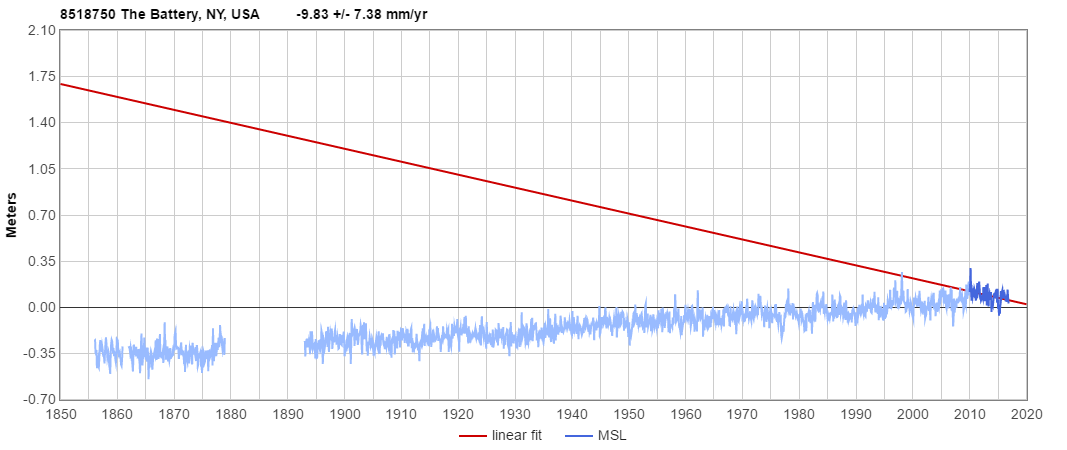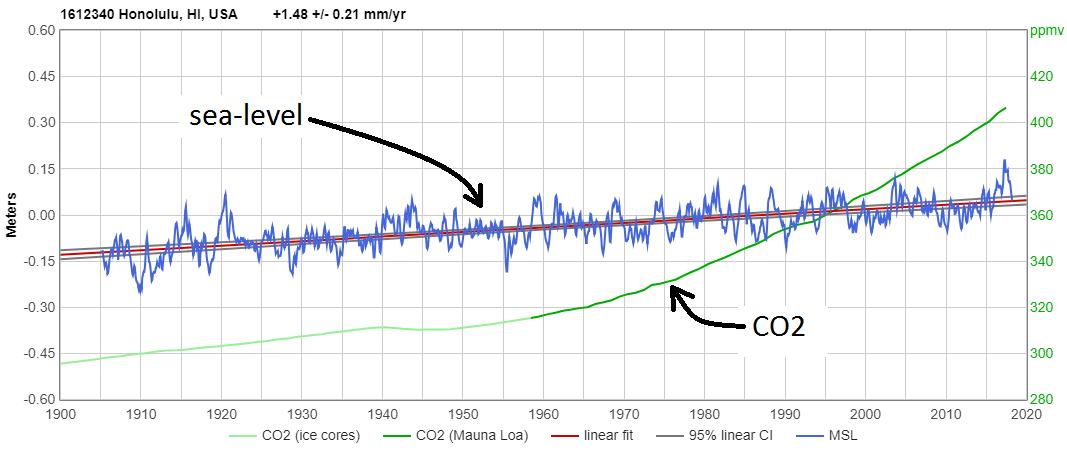The folly of using short sea-level
measurement records for trend analysis
22 July, 2018
Many news stories about sea-level rise are based on very short measurement records, sometimes even as short as ten years. That is much, much too short to derive a robust trend from tide gauges; fifty to sixty years is a reasonable minimum. There's a wealth of literature reporting that fact; here are some links:
The problem is that transient effects, with the oceans “sloshing” around, and ENSO and AMO cycles, and intermittent weather-driven filling and emptying of terrestrial water storage, like Australia's Lake Eyre, play havoc with short trend calculations.
For instance, do you remember the huge media splash about Sallenger's 2012 Nature paper, about a “hotspot” of accelerated sea-level rise along the U.S. Atlantic Coast, from Beaufort, NC north, especially at New York City?
It turns out that there was no sustained acceleration in rate of sea-level rise, only multidecadal fluctuations. The oceans are full of water, and they slowly SLOSH. So it's not surprising that if you pick short enough intervals and small enough regions you can find temporary, localized increases and decreases. That's all Sallenger did.
Here's what sea-level at NYC did following the period that Sallenger analyzed:
Some “hot spot,” eh? ![]()
CO2 levels have been rising substantially and continuously for two-thirds of a century, and the trend in so-called greenhouse forcing has been roughly linear for the last forty years. (CO2 levels increased roughly exponentially, but CO2 level increases have a logarithmically diminishing effect on temperature.)
So, if the question at issue is how rising CO2 levels affect the sea-level trend, why would someone examine only a small fraction of that time period? Could it be because the full record is inconveniently linear, for the last nine decades or more, as you can see in this mid-Pacific measurement record?

